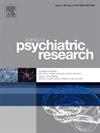Converging paths: Autistic traits, body image concerns, and disordered eating symptoms in women
IF 3.7
2区 医学
Q1 PSYCHIATRY
引用次数: 0
Abstract
Autistic traits, such as sensory sensitivities and rigid routines, have been linked to body dissatisfaction (BD) and eating disorders (EDs). However, the interplay between autistic traits, fat- and muscularity-related BD, and disordered eating remains underexplored.
This cross-sectional study examined the relationships between autistic traits, BD, and disordered eating in 298 women. Correlations and mediation analyses, alongside bootstrapping techniques, were used to evaluate relationships between variables.
Autistic traits were positively associated with “traditional” disordered eating symptoms including food avoidance and selective eating as well as appearance-related aspects of muscle dysmorphia. Autistic traits were positively associated with avoidant-restrictive food intake disorder (ARFID) symptoms. BD was elevated with increasing autistic traits, only in relation to body fat, not muscularity. Only body fat-related BD (BD-F), but not muscularity-related BD (BD-M) mediated the effect of autistic traits on disordered eating symptoms, predicting increases in both ED and body dysmorphic symptoms, as well as reductions in ARFID symptoms.
Our findings suggest that women with autistic traits may be more susceptible to internalizing socially perpetuated body ideals or to social feedback towards their appearance, as only stereotypically “female-typed” BD-F, but not “male-typed” dissatisfaction with muscularity (BD-M) mediated the link between autistic traits and disordered eating. Implications are discussed.
求助全文
约1分钟内获得全文
求助全文
来源期刊

Journal of psychiatric research
医学-精神病学
CiteScore
7.30
自引率
2.10%
发文量
622
审稿时长
130 days
期刊介绍:
Founded in 1961 to report on the latest work in psychiatry and cognate disciplines, the Journal of Psychiatric Research is dedicated to innovative and timely studies of four important areas of research:
(1) clinical studies of all disciplines relating to psychiatric illness, as well as normal human behaviour, including biochemical, physiological, genetic, environmental, social, psychological and epidemiological factors;
(2) basic studies pertaining to psychiatry in such fields as neuropsychopharmacology, neuroendocrinology, electrophysiology, genetics, experimental psychology and epidemiology;
(3) the growing application of clinical laboratory techniques in psychiatry, including imagery and spectroscopy of the brain, molecular biology and computer sciences;
 求助内容:
求助内容: 应助结果提醒方式:
应助结果提醒方式:


